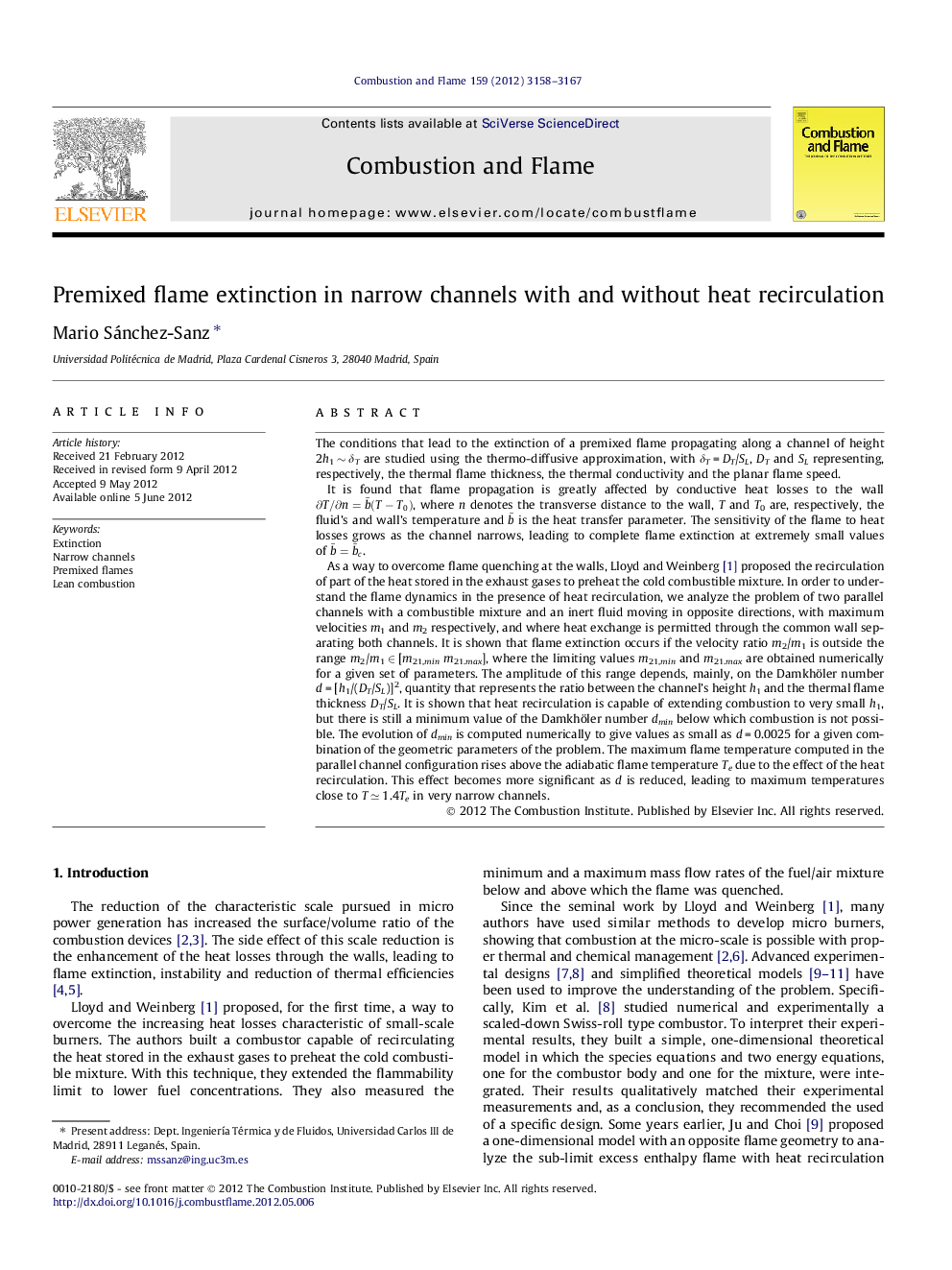| کد مقاله | کد نشریه | سال انتشار | مقاله انگلیسی | نسخه تمام متن |
|---|---|---|---|---|
| 169719 | 458036 | 2012 | 10 صفحه PDF | دانلود رایگان |

The conditions that lead to the extinction of a premixed flame propagating along a channel of height 2h1 ∼ δT are studied using the thermo-diffusive approximation, with δT = DT/SL, DT and SL representing, respectively, the thermal flame thickness, the thermal conductivity and the planar flame speed.It is found that flame propagation is greatly affected by conductive heat losses to the wall ∂T/∂n=b˜(T-T0), where n denotes the transverse distance to the wall, T and T0 are, respectively, the fluid’s and wall’s temperature and b˜ is the heat transfer parameter. The sensitivity of the flame to heat losses grows as the channel narrows, leading to complete flame extinction at extremely small values of b˜=b˜c.As a way to overcome flame quenching at the walls, Lloyd and Weinberg [1] proposed the recirculation of part of the heat stored in the exhaust gases to preheat the cold combustible mixture. In order to understand the flame dynamics in the presence of heat recirculation, we analyze the problem of two parallel channels with a combustible mixture and an inert fluid moving in opposite directions, with maximum velocities m1 and m2 respectively, and where heat exchange is permitted through the common wall separating both channels. It is shown that flame extinction occurs if the velocity ratio m2/m1 is outside the range m2/m1 ∈ [m21,minm21.max], where the limiting values m21,min and m21.max are obtained numerically for a given set of parameters. The amplitude of this range depends, mainly, on the Damkhöler number d = [h1/(DT/SL)]2, quantity that represents the ratio between the channel’s height h1 and the thermal flame thickness DT/SL. It is shown that heat recirculation is capable of extending combustion to very small h1, but there is still a minimum value of the Damkhöler number dmin below which combustion is not possible. The evolution of dmin is computed numerically to give values as small as d = 0.0025 for a given combination of the geometric parameters of the problem. The maximum flame temperature computed in the parallel channel configuration rises above the adiabatic flame temperature Te due to the effect of the heat recirculation. This effect becomes more significant as d is reduced, leading to maximum temperatures close to T ≃ 1.4Te in very narrow channels.
Journal: Combustion and Flame - Volume 159, Issue 10, October 2012, Pages 3158–3167